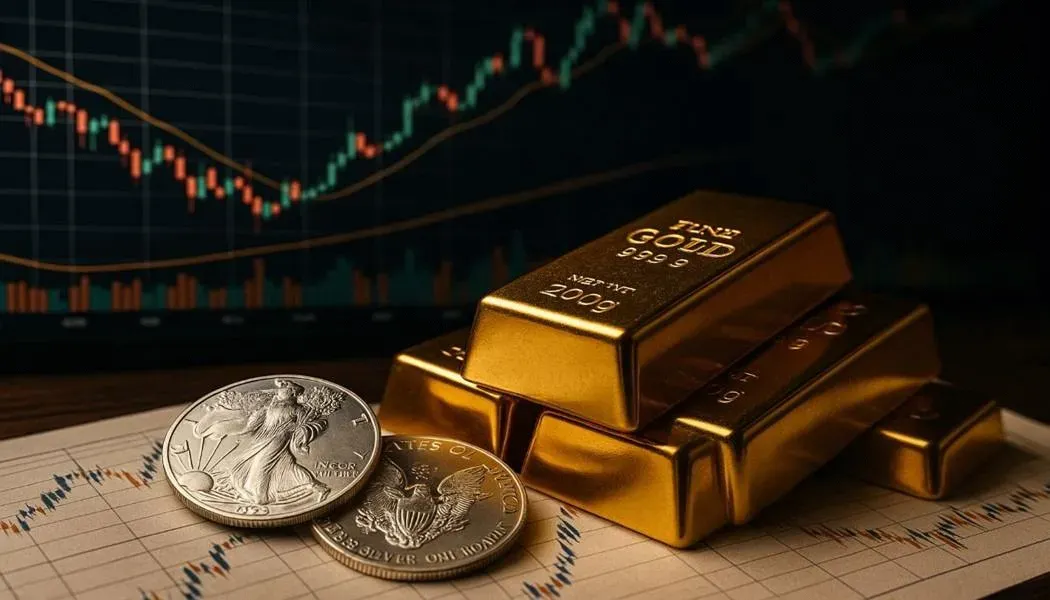
Navigating Uncertainty: Why Timing the Market Matters
Timing the precious metals market - especially gold and silver - can be a game-changer for investors. While “buy low, sell high” sounds simple, identifying those key moments requires research, tools, and a deep understanding of market cycles. Whether you're a seasoned stacker or a new investor, this guide breaks down how to spot opportunities, avoid common pitfalls, and make informed decisions using the right tools.
The Myth of Perfect Timing
Let’s be clear: no one can predict market bottoms and tops with absolute precision. Even seasoned traders get it wrong. Instead, successful investors focus on understanding market cycles, macroeconomic indicators, and sentiment trends to make more confident moves. In the world of precious metals, timing is less about perfection and more about positioning.
Tools to Help Time the Market
1. Price Charts & Technical Indicators
Use charts that show long-term price trends for gold and silver. Key technical indicators include:
- Moving Averages (50-day, 200-day): Help spot bullish or bearish momentum.
- Relative Strength Index (RSI): Indicates overbought or oversold conditions.
- Fibonacci Retracements: Reveal support and resistance levels post price swings.
Websites like TradingView, Bullion Hunters, and Kitco offer robust charting tools that help visualize market activity and technical analysis.
2. Market Sentiment Trackers
Monitor investor behavior and sentiment through:
- Commitment of Traders (COT) Reports from the CFTC
- Gold/Silver Ratio: A high ratio may signal silver is undervalued compared to gold.
- Google Trends: Search volume spikes for “buy gold” or “sell silver” often reflect public sentiment.
3. Macroeconomic Indicators
Precious metals react to broader economic cues:
- Inflation reports (CPI, PPI)
- Interest rate decisions by the Fed
- U.S. Dollar Index (DXY)
- Geopolitical instability or financial crises
These factors often trigger safe-haven demand, particularly for gold.
Trends That Signal Opportunity
🔹Rising Inflation Expectations
Gold is historically viewed as a hedge against inflation. If inflation is climbing and real interest rates remain low or negative, that’s typically bullish for gold.
🔹Central Bank Activity
When central banks buy gold in bulk or hint at rate cuts, it's often a cue that precious metals could surge.
🔹Physical Supply Constraints
Rising premiums on physical bullion or delivery delays can signal increased demand and tight supply - often a precursor to upward price moves.
Common Traps to Avoid
🔹FOMO Buying
Chasing a rally after a significant price jump is risky. Wait for pullbacks or consolidation patterns before entering.
🔹Ignoring Premiums
Spot price isn’t everything. Watch premiums on physical bullion, which can remain high even when spot prices dip.
🔹Over-Leveraging
Avoid margin trading unless you fully understand the risks. Volatility in the metals market can lead to steep losses.
Long-Term Strategy: Dollar-Cost Averaging
If timing the market feels too complex, dollar-cost averaging (DCA) is a proven alternative. By purchasing a fixed dollar amount of gold or silver at regular intervals, investors reduce the impact of short-term volatility and emotional decision-making.
Use Bullion Hunters to Compare and Track Prices
Bullion Hunters empowers you to monitor live spot prices, track price trends across major dealers, and find the best deals on physical gold and silver. With side-by-side price comparisons and premium tracking tools, investors can make smarter buying decisions even without “perfect timing.”
Final Thoughts: Position, Don’t Predict
Rather than trying to guess the exact bottom or top, use research, tools, and historical context to position your portfolio. Timing the precious metals market is about strategy, not luck. Whether you’re stacking for the long haul or aiming for short-term gains, a well-informed approach always wins.
